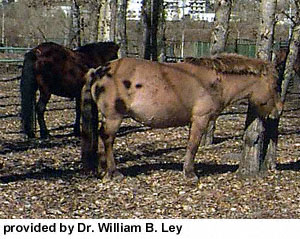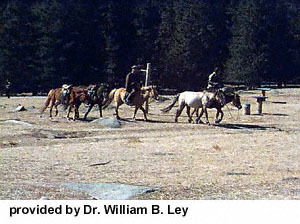

Mongolian


Introduction: If you have any comments or suggestions, please click here.
Names: Mongolian.
I have found this called a horse and a pony. I will put it under pony due
to size, but for now I will call it whatever my sources call it and look into
the details later.
(Beware! One source had a note about "the
Mongolian Pony" and had a picture of the Przewalski
Horse, also known as the Mongolian Wild
Horse! The note stated that "the Mongolian Pony is descended from
the ancient native ponies of Mongolia, which the local tribes used as pack
animals. These nomadic people traveled widely." This would tell
me that they were actually talking about the Mongolian Pony, but had a
picture of the Wild Horse! Also, as you may see below, this is
sometimes called the Mongolian Horse. So be careful; the Pony
and Horse are apparently the same thing, but different from the Wild
Horse!)
Origin: The Mongolian horse is one of the most important and numerous breeds found among the indigenous horse breeds of China. They are distributed widely throughout the Northeast, North China and the Northwest, mainly in the high plains and highland areas.
Breeding: One of the most ancient types of the domestic horse, found in both a wild (feral) and a domesticated state over the whole of Mongolia. As a result of the severe climate and meager food supply of their desert surroundings, these small horses are exceedingly hardy and enduring. The semi-wild Mongolian ponies interbred freely with Przevalsky's horse before the latter was reduced in its native haunts almost to extinction. Too, the Mongolian pony, or its ancestors, by having mixed with Arabian horses, are said to have produced teh Turkoman horse of Turkestan, along with numerous pony breeds native to India, Burma, and the countries and islands of southeastern Asia in general.
Description: They differ from the truly wild Mongolian horse (Equus caballus przewalskii) in being 2 to 3 inches taller (i.e., 50-55 inches), having hanging manes with forelocks, tails that are long-haired even at the roots, and a somewhat lighter body build. Along with these differences is their coloration, which is either grey, chestnut, bay, or sorrel, with dun (the typical color of the wild horse) being comparatively rare.
Size: The average wither height of males is 128 cm, females 127 cm, but body size varies with environmental conditions. Hill-bred ponies of about 13.1 hands are well able to withstand frost and flourish on the poorest food.
Temperament:
Features: Mongolian horses possess remarkable working ability. For carting, four horses, with a load of 4400 lbs, can walk 50-60 km a day. During the grass-growing season, mares are milked 4-5 times a day, producing 0.11 lbs of milk each time. Yearly production is 662 lbs. Hill-bred ponies are fast, enduring, have an ability to jump, and possess particularly round hard hooves that, unshod, are capable of handling the roughest going.
Uses: It is a dual-purpose horse, used primarily for riding and carting, but is also used for meat and milk production.
Accomplishments: Not many years ago, a Mongolian set off to ride home across rough and hilly countryside. He set off at sunrise and arrived at sunset, the distance being more than 100 miles. Mongolian ponies vary according to district and breeding, and in this case it was an "Iron Hoofed" pony, from Keshitang Banner in eastern Inner Mongolia.
Curiosities:
Profiles:
Conclusion: